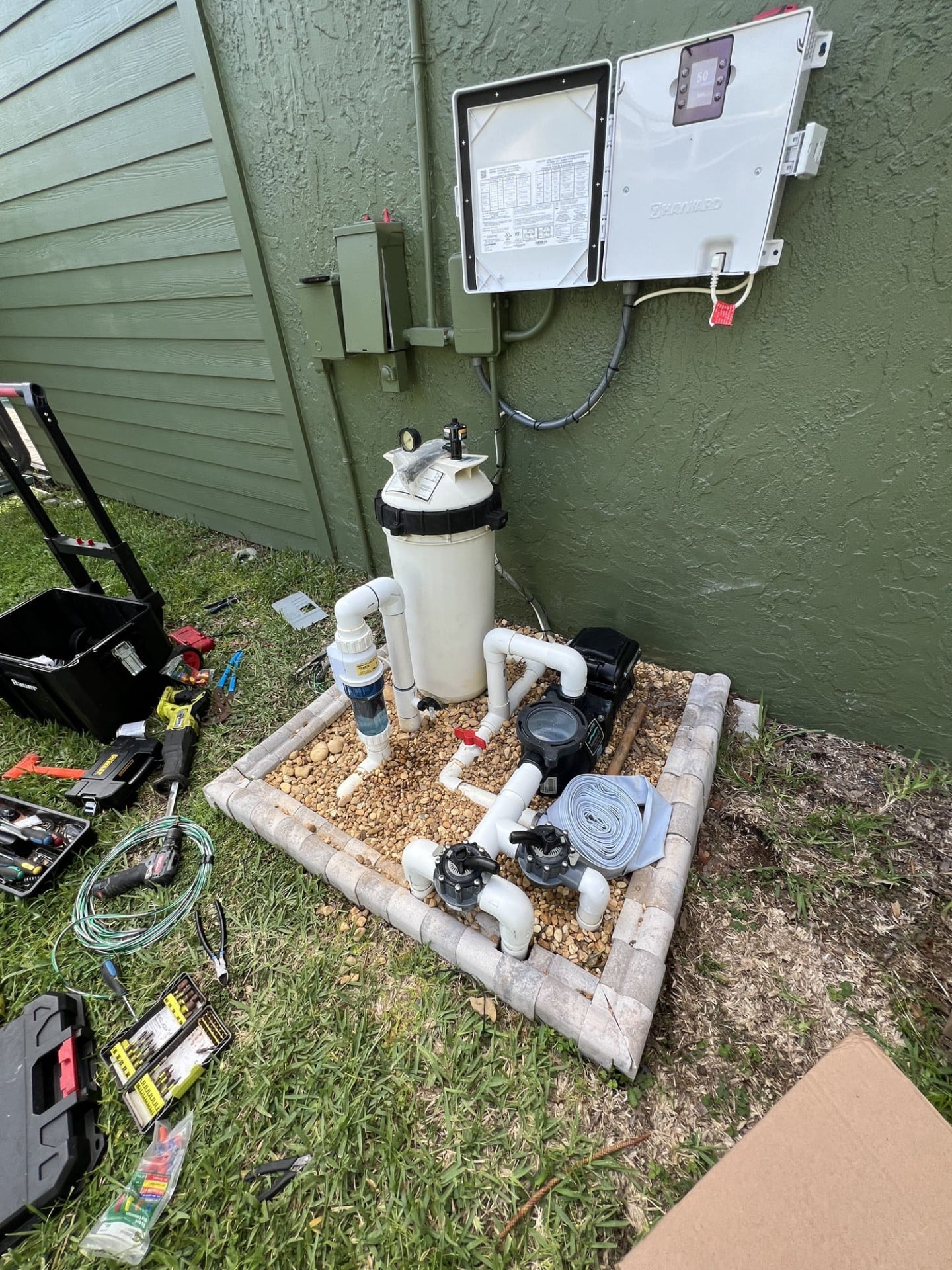Saltwater pools are a popular choice for homeowners seeking a comfortable swimming experience and reduced chemical use. While maintenance differs from traditional chlorine pools, saltwater pools are not necessarily harder to maintain. Below is a clear explanation of what to expect when maintaining a saltwater pool.

Key Maintenance Tasks for Saltwater Pools
- Monitor Salt Levels
Saltwater pools rely on salt to produce chlorine. Check salt levels every week using a test strip or digital tester. The ideal range is typically 2,500 to 4,000 parts per million (ppm), depending on the manufacturer’s guidelines. - Clean the Salt Cell
The salt chlorine generator contains a salt cell that can develop calcium buildup over time. Clean the cell every three to six months using a diluted acid solution or as recommended by the manufacturer. - Test Water Chemistry
Test pH, chlorine, and alkalinity levels weekly. Adjust chemicals as needed to keep the water balanced. Proper chemistry helps prevent algae and protects pool equipment. - Inspect Pool Equipment
Regularly check the salt chlorine generator, pump, and filters for wear or damage. Promptly address any issues to avoid costly repairs. - Shock the Pool Occasionally
Even with a salt chlorine generator, occasional pool shocking is necessary to eliminate contaminants. Use a chlorine-based shock treatment every few weeks or after heavy use.
Pros of Saltwater Pool Maintenance
- Fewer Chemicals
Saltwater pools require fewer chemicals compared to traditional pools. This reduces handling and storage of hazardous substances. - Consistent Chlorine Levels
The salt chlorine generator maintains stable chlorine levels, reducing the need for frequent manual adjustments. - Lower Skin and Eye Irritation
The lower chlorine concentration in saltwater pools minimizes irritation, creating a more enjoyable swimming environment.
Challenges of Maintaining a Saltwater Pool
- Initial Equipment Costs
Salt chlorine generators are an upfront investment, typically ranging from $1,500 to $3,000. However, they save money on chemical costs over time. - Potential Equipment Corrosion
Salt can corrode metal components if not properly managed. Use equipment designed for saltwater systems and clean regularly. - Regular Monitoring
While saltwater systems automate chlorine production, you must still monitor and adjust water chemistry to keep the pool in good condition.
Is a Saltwater Pool Right for You?
Saltwater pools require regular but manageable maintenance. With consistent care, they offer a long-lasting and comfortable swimming experience. Consider the initial costs and ongoing tasks to determine if this type of pool suits your needs.
Research References For You:
- Centers for Disease Control and Prevention (CDC): Pool Care Basics
www.cdc.gov/healthywater/swimming - Pool & Hot Tub Alliance: Saltwater Pools Overview
www.phta.org - Swim University: Saltwater Pool Maintenance Guide
www.swimuniversity.com - In The Swim: Pool Maintenance Tips
www.intheswim.com
Saltwater pool can be maintained with ease. Understanding these steps can ensure a clean and balanced pool throughout the year. Have more questions? Contact us today!
Switching from traditional chlorine pools to saltwater systems provides clear advantages, especially for homeowners in Pinellas County. These benefits align Read more
Converting your traditional chlorine pool to a saltwater system can enhance your swimming experience. At Mango Pools, we specialize in Read more



